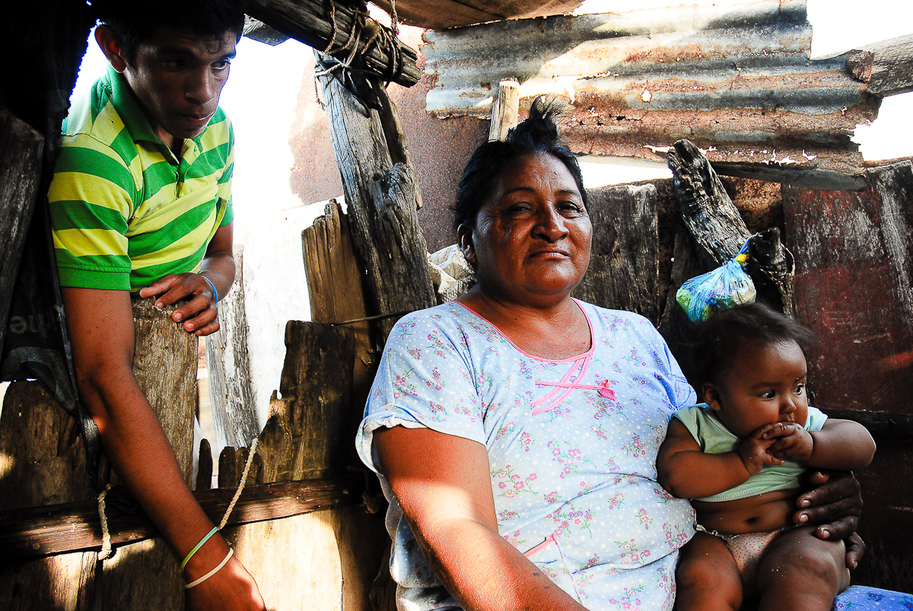
Cuentos Guajiros
francesco lastrucci | la guajira, Colombia
Photographer: francesco lastrucci
Exhibit Title: Cuentos Guajiros
Location: la guajira, Colombia
Located on the northernmost tip of South America, the harsh and arid Guajira Peninsula straddles the border of Venezuela and Colombia. Until recently, it was rarely visited by outsiders, due in part to its Wild West reputation as a hub for trafficking in humans, drugs, and other items, and as the home of the strong-willed Wayuu.
For 500 years, the Wayuu people have resisted all who have come to take their land or resources, from Spanish settlers to English pirates. The discovery of coal, oil, salt and gas, however, has succeeded in altering the equation, and rapacious multinational energy companies now threaten not only La Guajira but the culture and way of life of the Wayuu.
The Wayuu are also caught in the ongoing war between the Revolutionary army and the paramilitaries, placing the Wayuu in an extremely vulnerable position. In addition to drug smuggling, the paramilitaries have sought to assume control over the lucrative trade in gasoline that has traditionally been managed by the Wayuu.
1- WAYUU LAND
Located on the northernmost tip of South America, the harsh and arid Guajira Peninsula straddles the border of Venezuela and Colombia. Until recently, it was rarely visited by outsiders, due in part to its Wild West reputation as a hub for trafficking in humans, drugs, and other items, and as the home of the strong-willed Wayuu.
For 500 years, the Wayuu people have resisted all who have come to take their land or resources, from Spanish settlers in search of pearls to English pirates looking for treasure. The discovery of coal, oil, salt and gas, however, has succeeded in altering the equation, and rapacious multinational energy companies now threaten not only La Guajira but the culture and way of life of the Wayuu.
The Wayuu are also caught in the ongoing war between the Colombian army, FARC and right-wing paramilitaries, placing the Wayuu in an extremely vulnerable position. In addition to drug smuggling, the paramilitaries have sought to assume control over the lucrative trade in gasoline and products from Venezuela that has traditionally been managed by the Wayuu, who are able to travel freely between the two countries and to bring goods into Colombia almost duty free. According to UNICEF, the Guajira ranks second among the poorest places in Latin America after Haiti
Wayuu society is based on matrilineal clans, whose semi-nomadic lifestyle has traditionally revolved around hunting, fishing, and animal herding. Wayúu children bear their mother’s last name. Wayúu women are the center of the family. Their presence in the household symbolizes respect and unity. They stay home raising the kids and teaching them their traditions and customs while men go out and work.
I was exploring the every day life focusing mostly on the wayuus and their relationship with the land. Guajira lives with it's own unwritten social and economic rules. I was focusing on some themes to represent their economical, cultural and social existance such as: salt workers, contraband (mostly gasoline), men alcholism issues, family relationships, relationship with the territory, goat breeding and commerce (often their most important economy exchange), weaving (knowing how to weave is a symbol of creativity, intelligence and wisdom, a practice that is past on from one generation to the next. ), daily lifestyle.
This is an extract from my long term project CUENTOS GUAJIROS, work in progress since nov 2010. It’s divided in to 6 parts (cuentos). Wayuu land is at the moment the most complete.
La Guajira, Colombia is an unique place, unknown, harsh, arid and tough. I'm exploring and developing anthropological, geographical, sociological and economical themes related to the territory. Wayuu, contraband, desert, magical realism, gas, and sea salt contribute to create a unique environment.It’s a forgotten land, completely out of the national and world media radar.
Make Comment/View Comments